On setting up our new Fluval Spec V aquarium, I did quite a bit of research on what types of heaters would be a good fit for this size aquarium. Some of the questions / criterion that needed to be met:
- I wanted a heater that would fit entirely in the pump section submerged, with only the cord coming out the top.
- I wanted a heater that had a wattage (power) that matched the size of the aquarium (5 gallon nano).
- A heater that is reliable – most importantly, one that will not fail in the ‘on’ state and fry my inhabitants.
- A reasonable price for a budget nano aquarium.
In my research, the model that kept coming up as a good fit for my requirements was the Hydor ‘Theo’ Line. Their 25 watt and 50 watt
models are a size that others said would fit in the pumps section of the Spec V.
In addition to the little 25 and 50 watt versions, the Theo line also has capacities of 100 watts, 150 watts, 200 watts, 300 watts, and 400 watts.
Features of the Hydor Theo Heater:
The Hydor Theo 25W and 50W models are identical in size and operation, differing only in power. They are designed to work fully submersed – it will work fine with only the power cord exiting from the water. It is also allowed to work with the controller (plastic) end out of the water, but all of the glass portion should be below the water line.
The heater is very simple in operation. It has a dial controller on the end to set the temperature set point – my model is for Degrees Fahrenheit. Markings are for every four degrees, but between each number there are distinct indexes, or clicks to indicate each degree. The range of adjustment is from 70 degrees F to 90 degrees F.
The instructions (you can download them here) state that the heater will work oriented horizontally or vertically. It comes with two suction cup mounts that clip onto the glass portion of the heater. The suction cup mounts are removable.
When the heater is in heat mode, two orange lights illuminate, one at the top of the control dial and another half way down the heating element section.
Dimensions:
Since the Hydor Theo 50’s strong suit is it’s small size, I want to provide some details on the dimensions. I have measured this heater as carefully as I can, down to the nearest 1/16th of an inch (tighter than that when I could use my digital calipers). Metric values are conversions from english and rounded to the nearest mm. Know that there will be some variance from unit to unit, but these numbers will be very close.
- Diameter of the glass heating element section: 7/8″ (22 mm). Note that the control end is larger.
- Diameter at the largest point: 1-15/32″ (37 mm). This is measured at the bulbous end with the controls. It is slightly larger along one axis (what I measured) than the other.
- Total length: 7″ (178 mm). This is from the end of the glass element up to the top of the red control dial.
- Mounted Distance from Glass (short axis): 1-1/2″ (38 mm). This seems like the most natural orientation. It is possible to mount with the long axis perpendicular to the glass, which increases the distance to 1-3/4″ (44 mm)
- Minimum water level: 115 mm (4.53″) measured from the end of the heater up to the minimum fill line.
- Distance from the minimum water fill line to the top of the heater: 64 mm (2.52″)
The Hydor Theo 25 watt has the same dimensions as the 50 watt.
Hydor Theo Reliability:
Before I decided to purchase this aquarium heater, I checked on Amazon to look at the reviews. They were divided, like reviews many times are at retail sites. People were giving reviews that are either good or very, very bad with not much in-between. There really isn’t much to say about an aquarium heater; if it does what it is supposed to do, you never notice it. I don’t expect it to maintain to the nearest tenth of a degree, but you just want to have comfort that it will maintain reasonable tolerances for temperature and won’t fail. For most people, this Hydor heater does just that.
The flipside to this are the minority of reviewers that have similar stories, usually something along the lines of noticing that their aquarium heater had stuck on, the temperature soared, and all their livestock was killed. These are very distressing reviews as it is such a severe failure.
Thermostat (un)reliability is a real problem for many brands of aquarium heaters and Hydor is not alone in this. It is possible to employ multiple temperature sensors to serve as a safety, but those features are not readily found in budget heaters like the Hydor Theo line.
I was not comfortable in playing russion roulette with my fish and waiting for the time when the heater may decide to stick in the on position, so I decided to employ the use of a separate temperature controller. In this setup, you have a separate temperature sensor (that I located in the filter section) that informs a controller. The controller then powers the heater on or off. I have the thermostat on the Hydor set to around 90 degrees fahrenheit so that when the temperature controller provides power to the heater it will come on. The extra level of safety is achieved because if the separate controller senses the temperature is too high, it will cut all power to the heater. This makes the possibility of a fail ‘on’ very unlikely. I would highly recommend a temperature controller of some sort for anyone to give that extra peace of mind. They are a bit of an investment, but I managed to make one myself that works great.
Use in a Fluval Spec Aquarium:
This heater fits great in the pump section of the Fluval Spec line of Aquariums, but there were a few things to discover through experimentation to get it to fit. First, I played around quite a bit with pump orientation to get the pump and outlet tube positioned where there was an open space for the heater. Even with fiddling with pump position, I couldn’t see how anyone could get this thing to fit. The problem was trying to install with the two supplied suction cup mounts. They don’t work well in this application. First off, the cups just don’t adhere to the rough, frosted texture of the pump section glass. Second, the suction cup mounts just take up too much space, making the unit too large to fit in the confined section.
Mounting the heater is as simple as ditching the suction cups and pushing it down into the open space. I was worried about the surface of the heater touching the glass or the outlet tube. If you work with it a bit you can get it positioned where there is minimal touching. However, even if it touches the sides a bit, it has not been a problem for me. The best place for the heater is pushed down so that the top is below the elbow that leads to the outlet. The pump section of the smaller Spec III is actually larger, so it is less challenging to get the heater to fit in that model.
I opted for the 50 watt as I wanted to have plenty of capacity in my Spec V to heat even if we decide to run the house really cold in the winter. It has no problem maintaining 78ºF (25.6ºC) with the ambient temperature as low as 60 degrees fahrenheit. I think for many people the 25 watt would be plenty for the 5 gallon Spec V and would have the advantage of building up to temperature more slowly.
I have detailed some other options and models for heating your Fluval Spec Aquarium in this page.
Long Term Update (December 2022):
I thought it was worth making an update to this review. I recently rescaped our Fluval Spec V and made note of the longevity of our Hydor Theo heater. Lots has changed over the years, but the heater is still going strong!
That’s just short of 9 years of use. . . and counting. Again, the longevity and reliability is helped by always using a temperature controller with this heater.
Using a temperature controller greatly reduces the change of failure because of excessive thermostat cycling (since the heater always operates as ‘on’). The remaining risk is breaking the glass, but it seems to be thick and durable.
For such a low price, I plan on getting another to be on-hand as a backup. In the meantime, I will keep this heater in service and we will see how long it lasts.


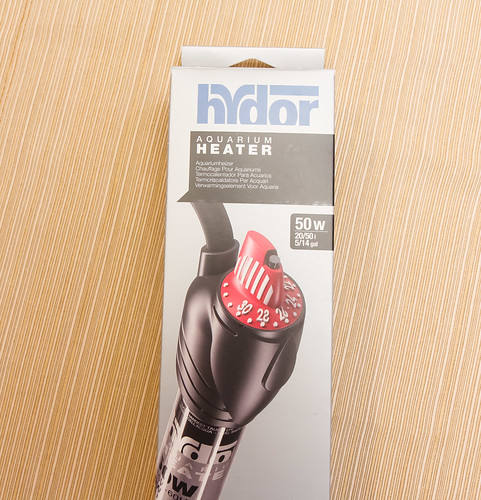
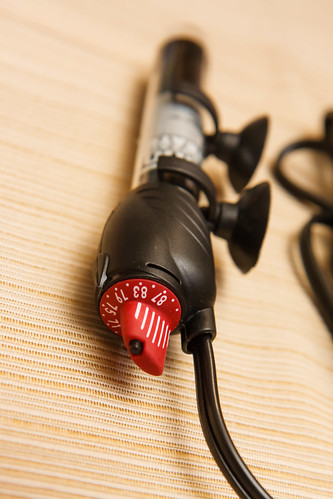

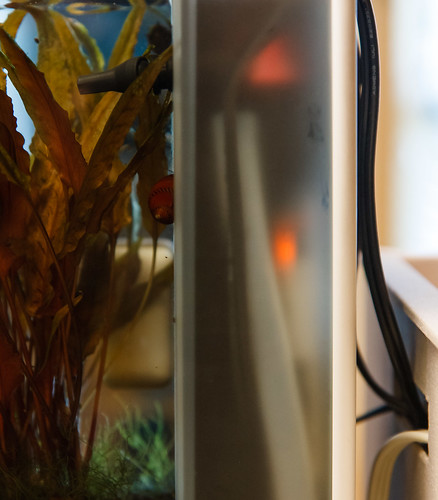
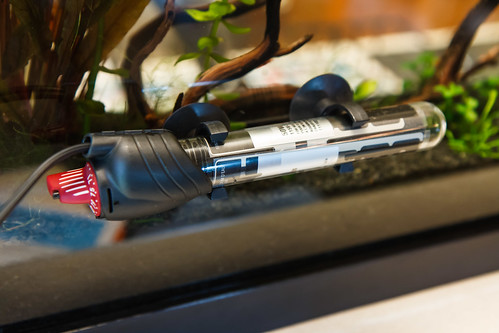
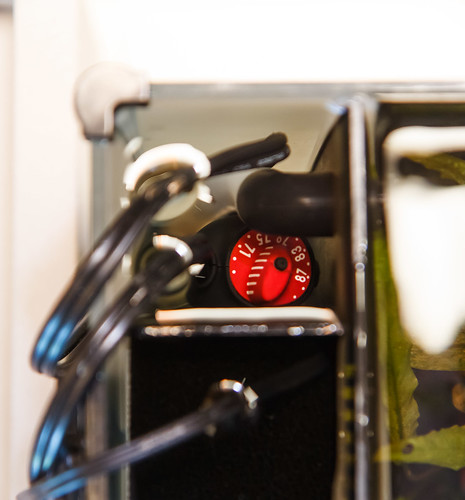
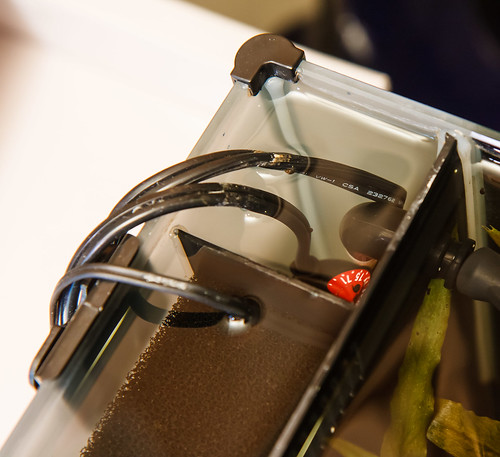

Sorry I wasn’t sure if my comment was received by you, but I wanted to find out what is the minimum water level for this aquarium heater?
The distance from the bottom of the heater to the minimum fill line is approximately 115mm. From the minimum fill line to the top of the heater is approximately 64mm. I hope that helps.
Thank you
Rejuvenated web invent:
http://dina.web.telrock.net
Hi, I recently got the fluval spec v and I cannot get any heater to keep the water at 80 degrees F. I have mods just thin sponge) on the intake and output of the filter for my betta, and the water flow set to high. I have tried 3 different brands of 50 watt heaters & let each run for a week with little change in the temperature. Temp my house is usually 68-75 degrees F. I have tried them in the filter compartment, and on front and back of the aquarium walls. I bought the hydor heater but it is back ordered for a month. I’m stumped. Any suggestion?
How and where are you measuring temperature? What temperature are you achieving?